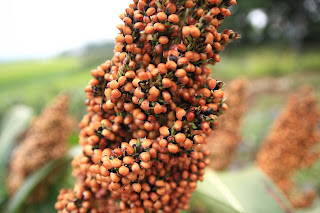- Did you know it's estimated that more than 40% of American adults have
a vitamin D deficiency? This is a vitamin that's
made by the body when it's exposed to the
sun, and that's why it's so
important to get adequate sunlight
exposure if you want to maintain
optimal vitamin D levels. However, too much
sunlight has its own health risks, of
course. That's why in this post,we're looking at
How to Safely Get vitamin D from Sunlight.
There's a good reason
why vitamin D is called the sunshine vitamin. When your skin is exposed to
sunlight, it makes vitamin D from cholesterol. The sun's ultraviolet B, or UVB
rays hit cholesterol in the skin cells, providing the energy for vitamin D
synthesis to occur. So providing energy to create vitamin D.
Now vitamin D has many
roles in the body,and is essential for optimal health. For example, it
instructs the cells in your gut to absorb calcium and phosphorus,two minerals
that are essential for maintaining strong and healthy bones. One the other
hand, low vitamin D levels are consistently and strongly associated with some
health consequences like osteopetrosis, muscle weakness, cancer, and
depression.
Best Time to Sunbathe.
Expose your skin around
midday. So midday, especially around summer, is the best time to get sunlight. At
noon, the sun is at it's highest point, and it's UVB rays are most intense. That
means you need less time in the sun to make sufficient vitamin D. Many studies
also show that the body is most efficient at making vitamin D at noon. For
example, among Caucasian adults in the U.K., sufficient but suboptimal vitamin
D status is attained after a summer's short sunlight exposure to 35% skin
surface area. And that was about 13 minutes, in this study.
Another study found
that 30 minutes of midday summer sun exposure in Oslo, in Norway, was
equivalent to consuming 10000 to 20000 international units of vitamin D. For
the record, the common recommended daily dose of vitamin D is 600 international
units, so you can see that supplements don't even come close to comparing to
the vitamin D we get from actual sunlight.
Skin Color may Affect Vitamin D Production.
The color of your skin
is determined by a pigment called melanin. Now those with dark skin have a lot
more melanin than those with light colored skin. Melanin helps protect the skin
against damage from excess sunlight. It acts as a natural sunscreen, and
absorbs the sun's UV rays to defend against sunburn and skin cancers.
However, that creates a
big dilemma because darker-skinned people need to spend longer in the sun than
lighter-skinned people to produce the same amount of vitamin D.
Studies estimate that darker-skinned people may
need anywhere from 30 minutes to three hours longer to get sufficient vitamin
D, compared to lighter-skinned people. This is a major reason why dark skinned
people are at an increased risk of vitamin D deficiency. So if you have dark
skin, you may need to spend a little bit of extra time in the sun to get your
dose of vitamin D. If you live far north from the equator, in these areas, more
of the sun's rays, particularly the UVB rays, they're absorbed by
the earth's ozone layer.
If You do Live Far North of
the Equator.
you probably need to
spend a little bit of extra time in the sun to get your vitamin D. For example, people who
live at the very top of the USA, and in Canada, in Northern Europe, they
struggle to make any vitamin D from sunlight, between the months of November
and February. Additionally people in Norway cannot make vitamin D from sunlight
between October and March, like they can't make any at all. So during this time
of the year, it's important that they get the vitamin D from foods and
supplements instead.
Expose more skin to make more vitamin D.
vitamin D is made from cholesterol
in the skin, and that means you need to expose more of the skin to make
adequate amounts of vitamin D. Some scientist recommend exposing about a third of
the area of your skin so it's typically could be just your arms and your legs. And
for the record, the UVB rays from the sun don't pass through windows. So if you
have a desk, and even though you get sunlight through the window, you won't be
making any vitamin D. So according to scientists recommendations,
Wearing a tank top and
shorts for 10 to 30 minutes three times per week during the summer should be
sufficient for most people with lighter skin. People with darker skin may need
a bit longer than this.
And just make sure to prevent getting
sunburned. Instead, try going without sunscreen for just the first maybe 10 or
30 minutes, depending on how sensitive your skin is to sunlight, and apply
sunscreen before you start burning of course. Sunscreen is thought to block
vitamin D absorption to some extent. They don't actually know how much, and
that's why it's recommended to quickly get a little bit of sun before you apply
the sunscreen.
So to summarize all
that, to make sure you get adequate vitamin D levels, try to get 10 to 30
minutes of sunlight exposure on your arms and legs about three times a week
during the summer. People with darker skin, and those very far north of the
equator, may need a little bit of extra time than this. But of course consider
how sensitive you are to the sun, and make sure that you don't get burnt.




















.jpg)









.jpg)











.jpg)



